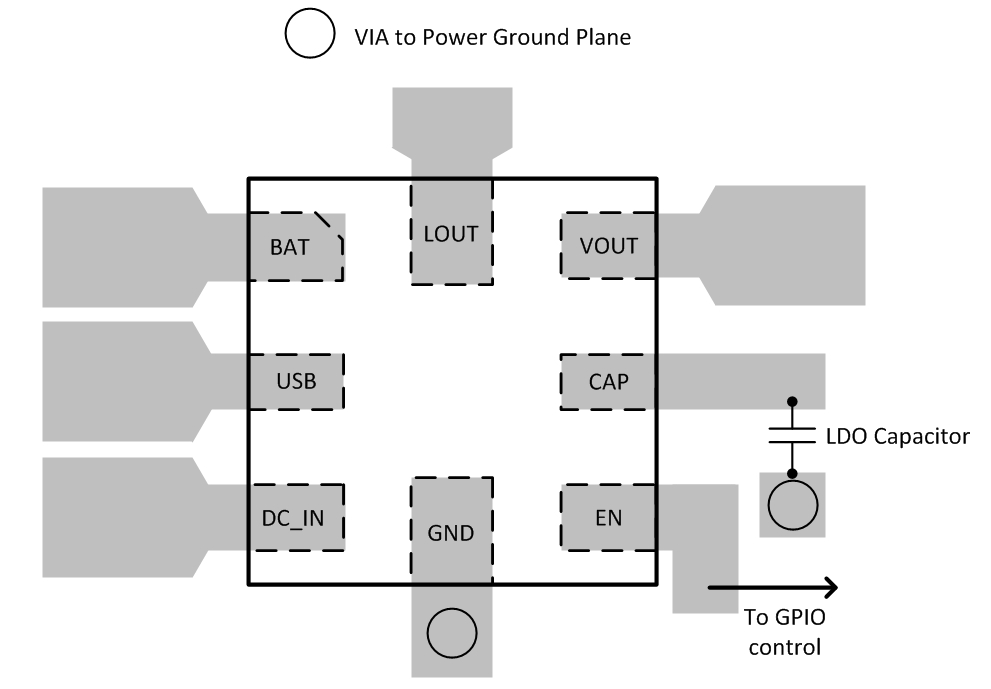ZHCS486A October 2011 – June 2015 TPS22933
PRODUCTION DATA.
11 Layout
11.1 Layout Guidelines
For best performance, all traces should be as short as possible. To be most effective, the input and output capacitors should be placed close to the device to minimize the effects that parasitic trace inductances may have on normal and short-circuit operation. Using wide traces for BAT, USB, DC_IN, LOUT, VOUT, and GND will help minimize the parasitic electrical effects along with minimizing the case to ambient thermal impedance.
11.2 Layout Example
 Figure 20. TPS22933 Layout Example
Figure 20. TPS22933 Layout Example